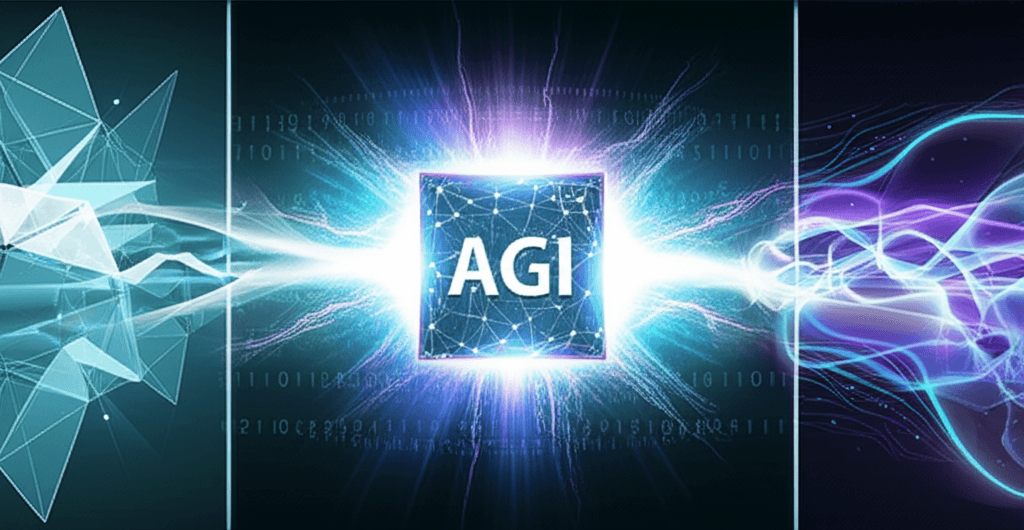AGI Clause Sparks High-Stakes Battle Between Microsoft and OpenAI
A crucial AGI clause jeopardizes Microsoft's $13 billion investment, sparking a battle over who controls future superintelligence.
June 26, 2025

A high-stakes disagreement is unfolding at the heart of the artificial intelligence industry, centering on the ambitious and enigmatic goal of artificial general intelligence, or AGI. Microsoft, the primary financial backer of OpenAI, is reportedly at an impasse with the AI research company over a critical clause in their partnership agreement.[1][2][3] This clause stipulates that should OpenAI achieve AGI—a level of AI with human-like cognitive abilities—Microsoft’s extensive access to OpenAI's technology would be terminated.[4][5][1] This contractual provision, once a distant hypothetical, has become a major point of contention, revealing the deepening complexities and strategic tensions within one of the most pivotal collaborations in modern technology.
The core of the dispute lies in a provision of the contract established when Microsoft made its initial $1 billion investment in OpenAI in 2019, a figure that has since grown to a reported $13 billion.[6][7] According to the terms, if OpenAI's board determines it has created AGI, Microsoft’s special rights to its partner's technology, including its coveted large language models, would be voided.[8][4][5] This reflects OpenAI's founding mission to ensure that such a powerful technology would benefit all of humanity, unconstrained by commercial obligations.[6][9][10] However, as the prospect of AGI appears increasingly attainable, with some in the industry predicting its arrival within years, Microsoft is now pushing to have this AGI clause removed.[8][7] OpenAI has so far refused, leading to a stalemate that has reportedly stalled other crucial negotiations, including OpenAI's planned corporate restructuring.[6][11][4]
This conflict over the future of AGI is intertwined with OpenAI’s efforts to evolve its corporate structure. The company is seeking to transition its for-profit arm into a public-benefit corporation (PBC), a move that requires the approval of Microsoft as its largest investor.[9][12][4] A PBC structure would allow OpenAI to raise more capital, potentially through an IPO, while still being legally bound to consider its societal mission alongside shareholder profits.[9][13][14] This change is seen as necessary to fund the massive computational resources required for advanced AI development, with CEO Sam Altman suggesting costs could run into hundreds of billions of dollars.[13][15] The disagreement over the AGI clause has become a significant roadblock to this restructuring, as Microsoft withholds its necessary approval while the long-term status of its access to OpenAI's most advanced technology remains uncertain.[11][4] Publicly, both companies maintain a united front, issuing joint statements about their productive partnership and optimism for future collaboration, but the prolonged nature of these negotiations signals a deeper strategic divergence.[6][4][5]
The tensions extend beyond just the AGI clause and corporate governance. The relationship, once a symbiotic pairing of a research powerhouse with a cloud computing giant, is showing signs of becoming more competitive. Microsoft has been actively developing its own in-house AI models, a move widely interpreted as an effort to reduce its dependency on OpenAI.[16][12] This includes the development of a new large-scale model, codenamed MA1, led by a prominent AI researcher hired from a competitor. Meanwhile, OpenAI has been diversifying its infrastructure partners, engaging with companies like Oracle and SoftBank for a massive data center project, signaling a move away from its exclusive reliance on Microsoft's Azure cloud platform.[16][17][12] There are also reported disagreements over revenue sharing, with OpenAI looking to reduce the percentage it pays to Microsoft in the future.[12][18] These moves suggest both entities are hedging their bets and preparing for a future where their interests may not be as closely aligned.
Ultimately, the dispute over the AGI clause is a flashpoint for fundamental questions about control, profit, and the long-term governance of transformative technology. For Microsoft, the prospect of losing access to what could be the most valuable technological breakthrough in history, after investing billions of dollars, is a significant risk.[7] For OpenAI, retaining control over AGI is central to its identity and stated mission to prevent such powerful AI from being monopolized by a single commercial entity.[6][1] The definition of AGI itself is a point of contention, with no universally agreed-upon standard, raising the possibility of future legal battles over when, or if, the threshold has been met.[7] The resolution of this impasse will not only determine the future of the Microsoft-OpenAI partnership but will also set a crucial precedent for how the entire industry navigates the immense commercial potential and profound societal implications of the race to build artificial general intelligence.
Sources
[1]
[7]
[9]
[10]
[11]
[12]
[13]
[15]
[16]
[17]
[18]